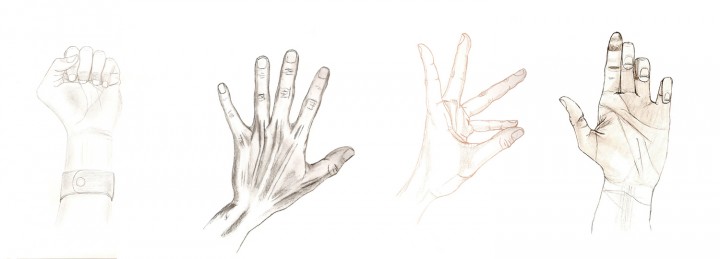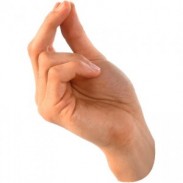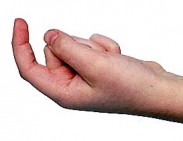

Image by Andrea Jacobs (http://celestialraven.com/drawings/)
Remember what your mom would say, actions speak louder than words; she was right. From eye contact to posture, nonverbal details reveal who we are and impact how others see you.
Yes, words are essential, but it turns out, we communicate mostly via body language.
The way you move, the way you stand and the way you listen tells others whether or not you care about what they are saying. When your words match your body language, they increase trust, clarity, and rapport. When they don’t, they trigger tension, distrust, and confusion. Unfortunately, many people send negative and confusing nonverbal signals without even knowing it. Therefore when this happens, both clarity and rapport are affected.
To be a better communicator, it’s essential to be sensitive not only to the nonverbal cues of others but also to the nonverbal cues you send.
As you know, communicating with someone from your own culture can be challenging enough but when speaking with a foreigner, it can perplexing.
Nonverbal communication gestures do not translate across cultures easily and can lead to serious misunderstanding. While translation systems are available for verbal communication, translators for nonverbal communication do not exist.
Nonverbal communication is composed of facial expressions, body movements, posture, gestures, eye contact, touch, space, and voice.
We must appreciate and identify that in one country a respectable gesture may mean something completely different than in another country.
Let’s learn about five different hand gestures commonly exchanged:
Understanding the different meaning of these signs, will not only enhance your conversation but may keep you out of trouble while talking to someone from another part of the world.

In the US, we use it to convey agreement; it assures people things are fine. In Brazil, Greece, and Spain it carries a different meaning! This sign is used to call someone an a**hole. While visiting Brazil in the 1950s, Richard Nixon flashed the OK sign to the crowd, and they responded with boos! In Turkey and Venezuela, this sign is an insult toward gay people. In France and Australia, it means zero or worthless. Lastly, in Japan this gesture means money.

We use this gesture a lot in the US; it means it is all great. But I recommend you do not use it among Middle Easterners and people from West Africa. People from Bangladesh, Australian and South Americans also find this gesture hideously offensive. It is assumed to mean that you want the receiver to stick it where the sun doesn’t shine, up yours or sit on it.

Where I am from in Latin America, snapping your finger meant to hurry up. When someone has an idea or remembers something, we see people in the US and Great Britain us this. In some cultures, it’s used to get someone’s attention, but in many cultures, it is just rude. So, to keep it safe, snap your fingers for the same reason the Ancient Greeks did — to keep the rhythm set by musicians and dancers.

In the Philippians, the beckoning sign is impolite and can be a cause to be arrested. In the USA it is used often to call someone over here. Careful when using this gesture in Japan it is insulting, fit for a dog and or another animal. In Singapore, beckoning is an indication of death.
The Corona

Rockers have adopted this gesture, and it is a sign of approval in America “rock on.” Except in Texas, where football fans use it as a sign representing the horns of a bull. In Buddhist and Hindi culture, it means the Karana Mudra which is used to dispel the evil. Watch out making this gesture in Argentina, Brazil, Colombia, Cuba, Spain, Portugal, and Italy since it is known as the ‘Cuckold’ used to tell a man that other men are enjoying his wife. In 1985, following the news that Texas Longhorns football team won the game, five Americans were arrested in Rome for using this gesture outside the Vatican.
We might not have translators for nonverbal communication, but we have our phone or computers at our disposal to learn and understand the meaning of gestures.
In short, it is always ok to ask people from different countries and cultures about the meaning of rituals, mannerisms, and gestures. It is a great topic to discuss with a friend from another country over a cup of coffee and a yummy pastry.
In other words, there is no wrong and right gesture, only cultural differences.
Kendal Knetemann founder of LingoHut where free language lessons. Like our Facebook page.